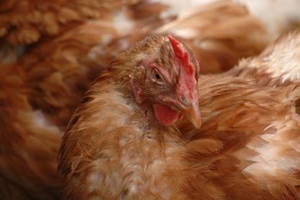Study: Reducing bone fractures in laying hens

Skeletal health in laying hens is a major welfare and economic problem with up to 80% of hens suffering bone breakages in some free range systems. A new three-year study hopes to reduce the fracture rates in laying hens thanks to a grant of £532,000 funded by the Biotechnology and Biological Sciences Research Council (BBSRC) and supported by industrial partner, Noble Foods.
The research project will be led by Drs John Tarlton and Michael Toscano from the University of Bristol’s School of Veterinary Sciences and Dr Krasimira Tsaneva-Atanasova in the University’s Department of Engineering Mathematics.
Collisions are believed to be the principle cause of keel bone fractures in free range systems (FRS) but the difficulty in observing breaks as they occur prevent a clear understanding of the determining factors.
With the 2012 EU ban on battery cage systems, as many as 30 million hens will be housed in alternative systems, mostly free range. This means a possible 24 million hens suffering bone breakage each year in the UK, which the industry and government view as unsustainable. Noble Foods, the UK’s largest egg marketing company and a longstanding partner in the group’s efforts to improve laying hen welfare, will play a central role in the study by providing open and free access to their varied housing systems.
The study will first replicate keel fractures in an ex-vivo impact testing apparatus. Bird characteristics, such as weight, age, and mechanical properties of the keel bone, and collision factors including impact energy and material compliance, will be mathematically modelled to understand how these elements interact to determine fracture occurrence and severity. The model will predict the likelihood of fractures occurring in a bird or flock.
The model will then be validated using live birds wearing specially designed vests fitted with tri-axial accelerometers, capable of measuring kinetic energies of natural impacts of birds within defined housing environments. Thus the energy and frequency of impacts a bird actually experiences will be quantified and related to the model.
On-farm studies will go on to use the accelerometers to determine kinetic energy profiles within particular commercial housing systems, which we have previously shown to impart widely differing fracture risks. The impact monitors will provide a physical measure of housing risk and allow the researchers to test the model in predicting real fractures in commercial settings.
“By analysing their kinetic energy profiles we can rapidly assess the keel bone fracture risk of commercial housing systems,” said Dr John Tarlton, Senior Research Fellow in the Infection and Immunity Group and principle investigator on the grant. “From this we can identify key elements of housing or bird physiology that can be modified by producers to substantially reduce fracture rates. If successful, this study will greatly improve the health and welfare of laying hens, enhance consumer attitudes to egg production, and promote the sustainability of the UK egg industry.”












